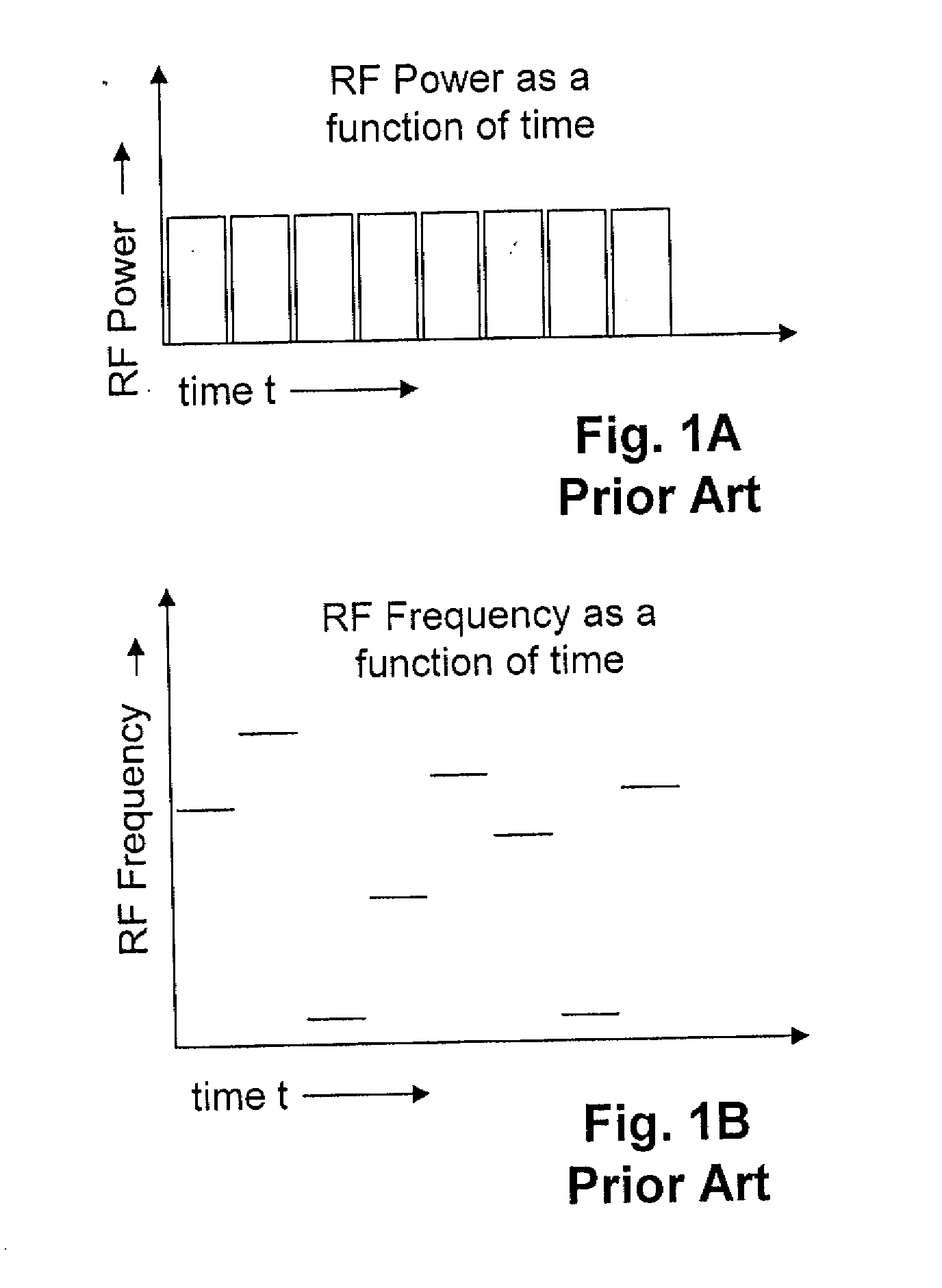Frequency Hopping System and Method for Communicating with RFID Tags
a frequency hopping system and tag technology, applied in the field of radio frequency re identification (rfid) transponders, can solve the problems of limiting the usefulness of such transponders, consuming more and more power, and consuming new functions and desired, etc., and achieve the effect of reducing the time taken to identify the tag or tag
- Summary
- Abstract
- Description
- Claims
- Application Information
AI Technical Summary
Benefits of technology
Problems solved by technology
Method used
Image
Examples
Embodiment Construction
[0024] U.S. Pat. No. 5,828,693 to Mays, et al. issued Oct. 27, 1998 entitled Spread spectrum frequency hopping reader system and U.S. Pat. No. 5,850,181 to Heinrich, et al. issued Dec. 15, 1998 entitled Method of transporting radio frequency power to energize radio frequency identification transponders, assigned to the assignee of the present invention, give details on RFID tags powered by an RF field where the frequency sent to the tags hops from frequency to frequency chosen from a pseudorandomly ordered list of frequencies. In both the above described patents, the RF field is sent out to the tags from a base station as a series of bursts of power at a particular frequency, with the frequency changing for the next burst, but the power and the length of time of the bursts are kept constant. U.S. Pat. No. 5,828,693 teaches that the length of time of each burst the regular series of bursts may be changed to avoid having one or more base stations interfering with one another. Apparatu...
PUM
 Login to View More
Login to View More Abstract
Description
Claims
Application Information
 Login to View More
Login to View More - R&D
- Intellectual Property
- Life Sciences
- Materials
- Tech Scout
- Unparalleled Data Quality
- Higher Quality Content
- 60% Fewer Hallucinations
Browse by: Latest US Patents, China's latest patents, Technical Efficacy Thesaurus, Application Domain, Technology Topic, Popular Technical Reports.
© 2025 PatSnap. All rights reserved.Legal|Privacy policy|Modern Slavery Act Transparency Statement|Sitemap|About US| Contact US: help@patsnap.com



